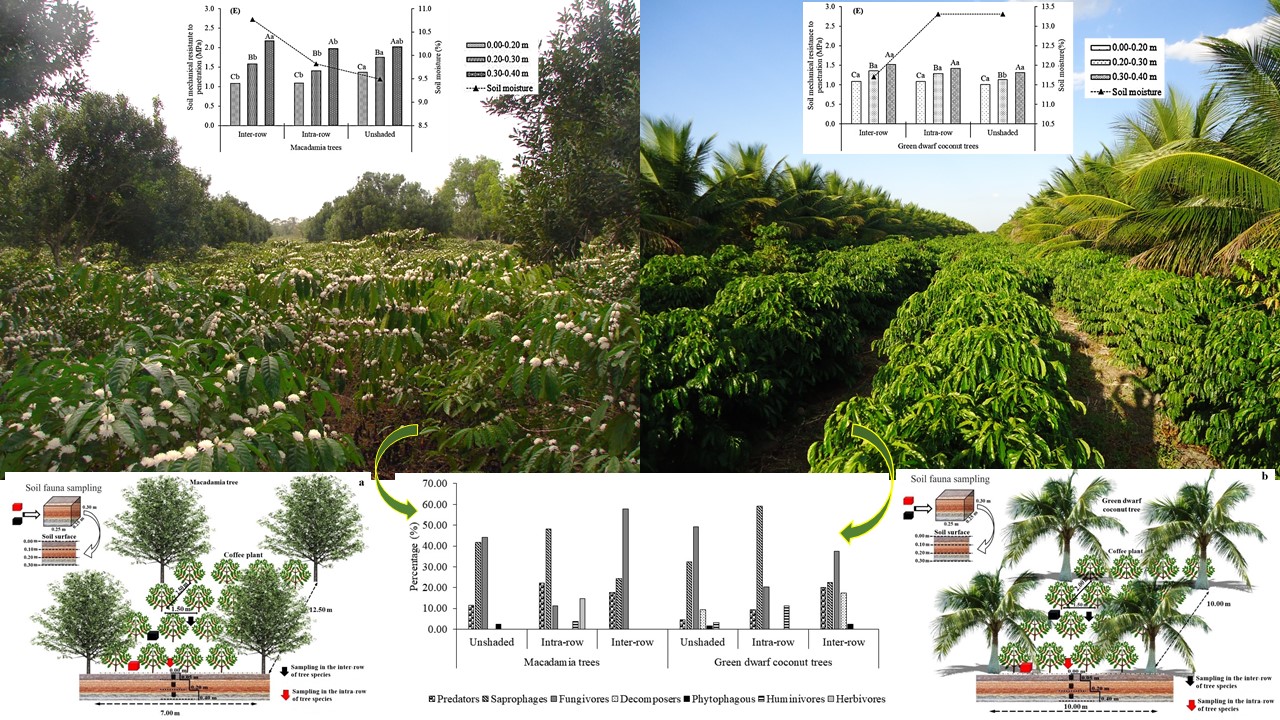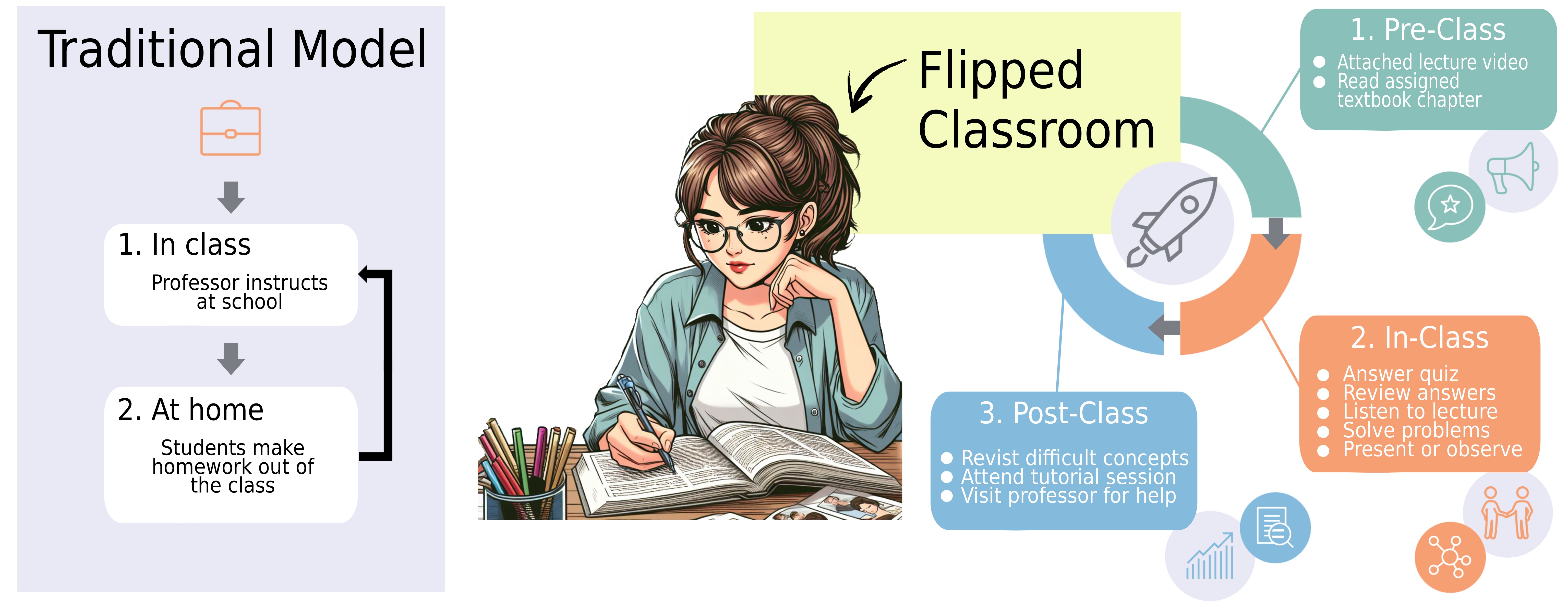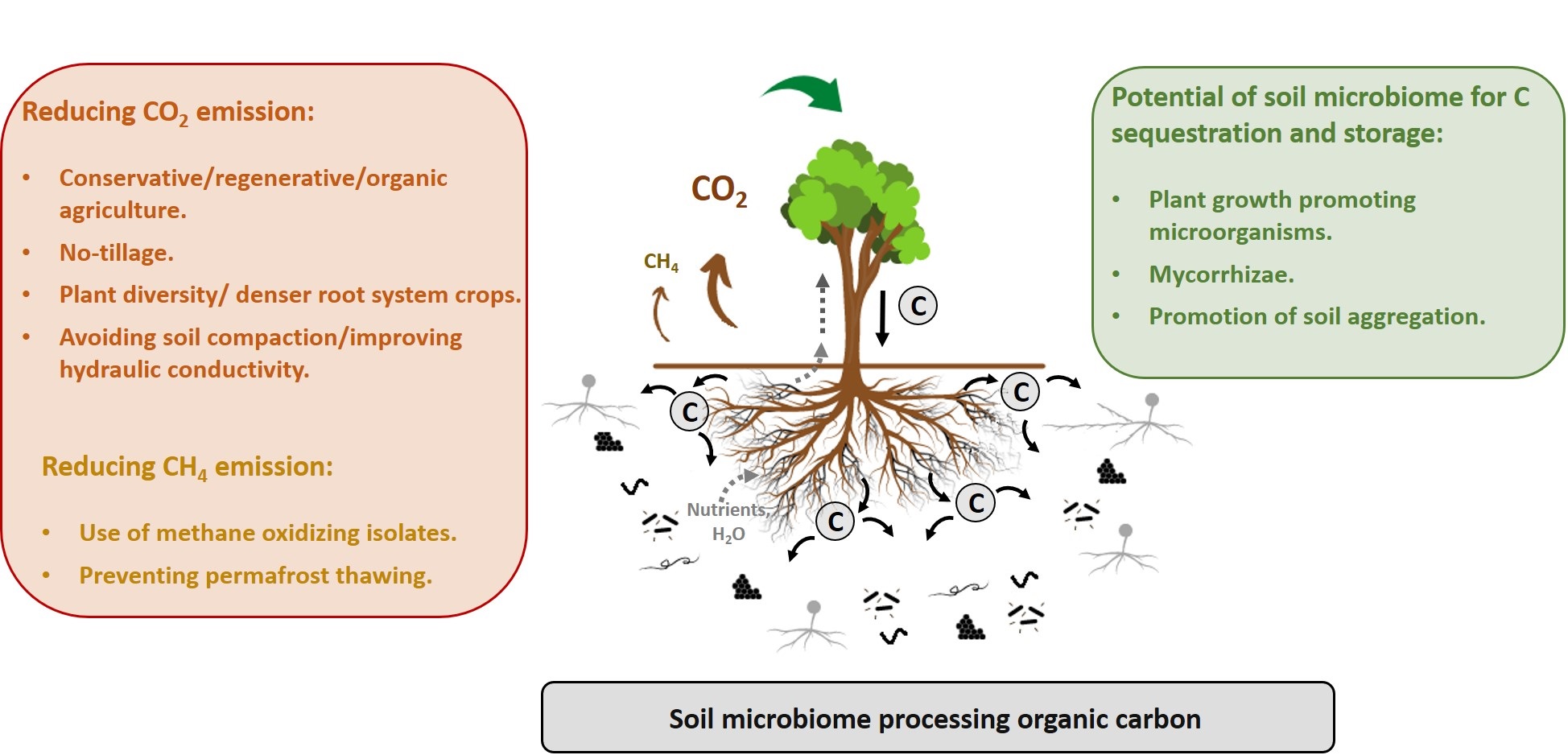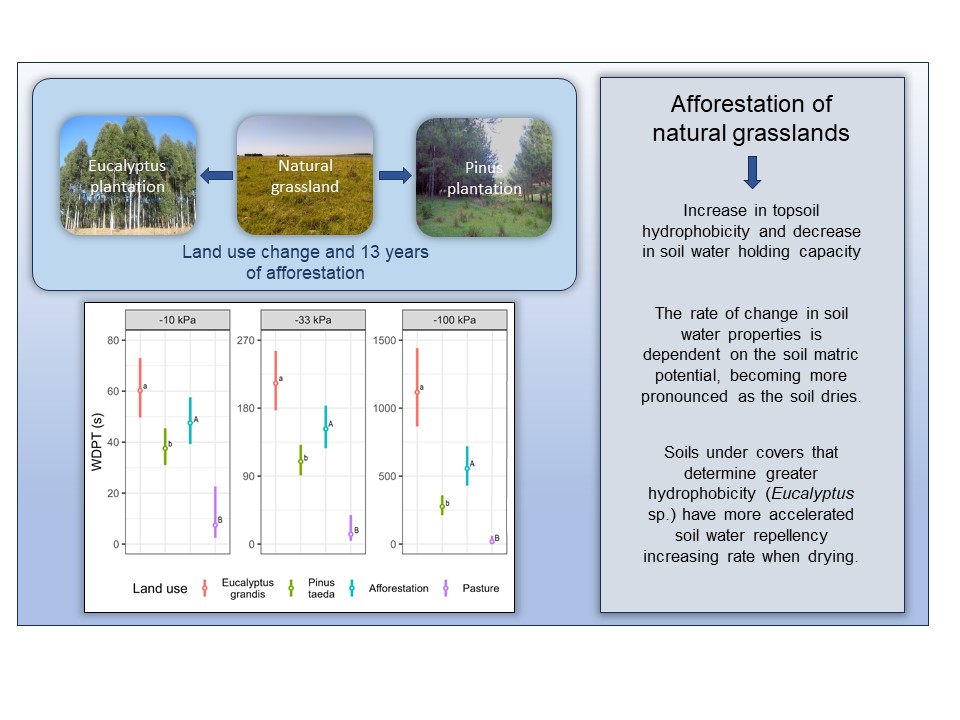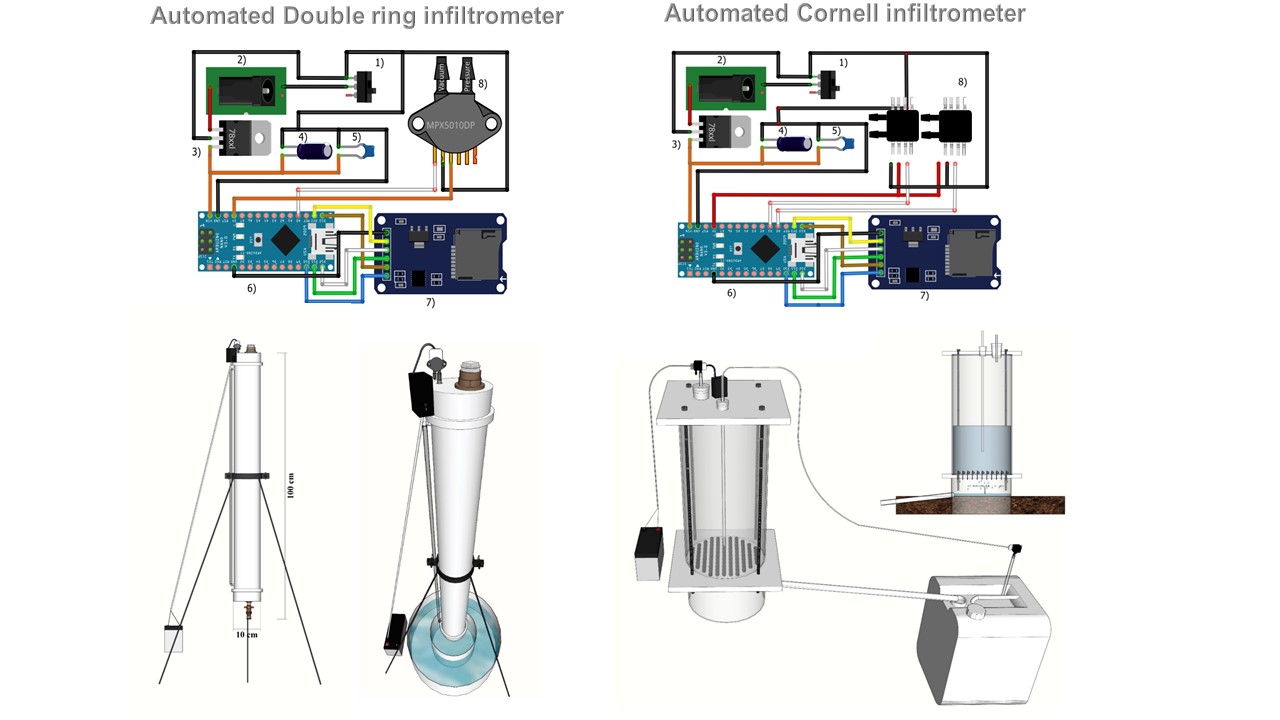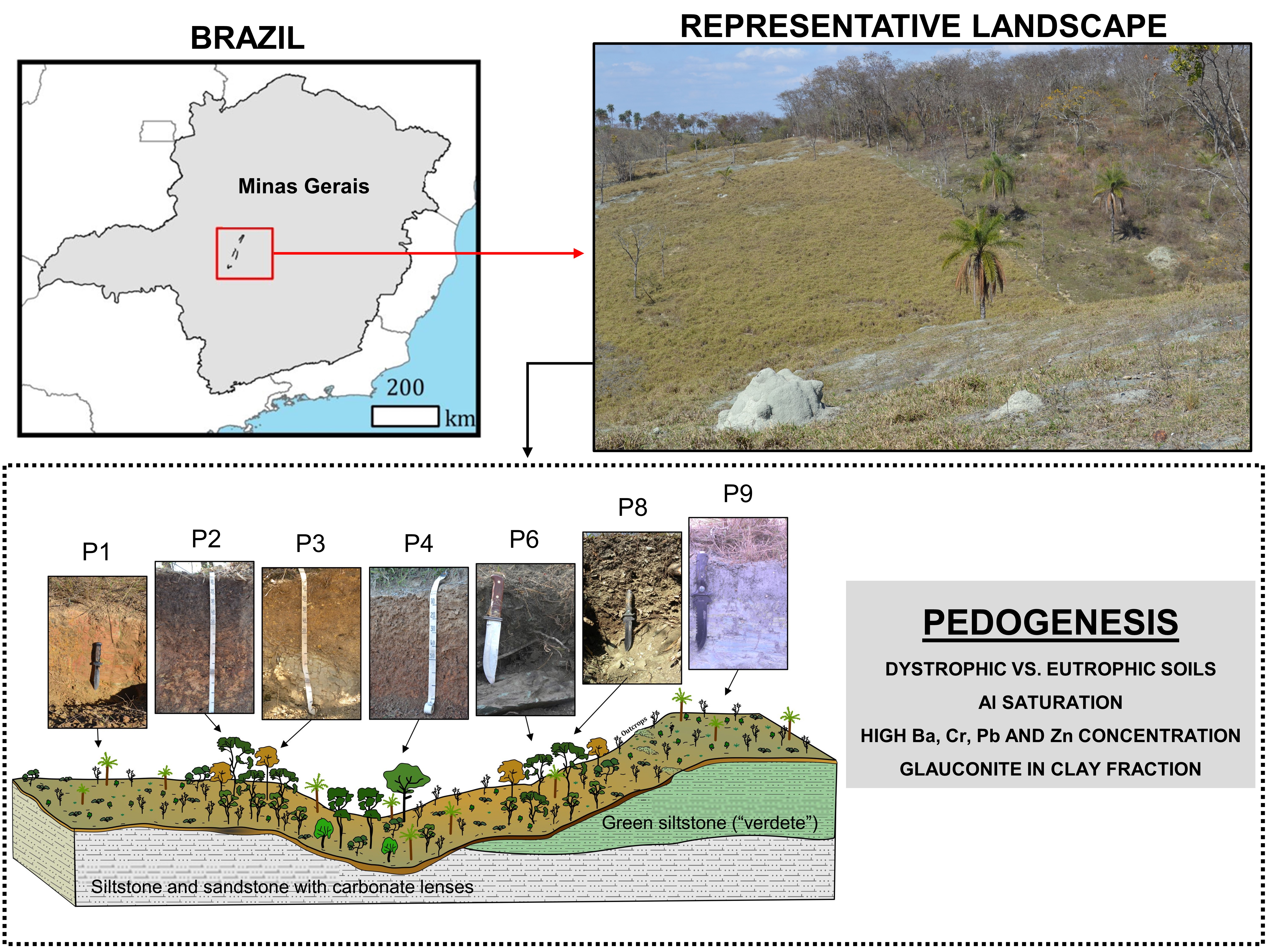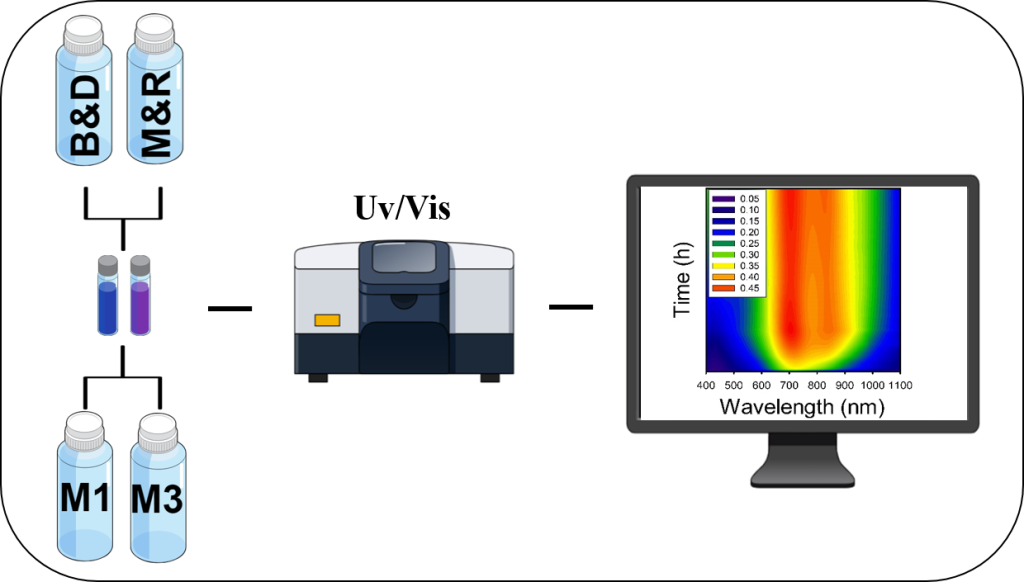Volume 48, 2024
Soil physical, chemical and biological properties in Conilon coffee intercropping systems
25/Mar/2024
ABSTRACT Shaded coffee systems may offer a series of benefits, however, studies on shaded cultivation of Conilon coffee crops are still scarce in the literature. This study aimed to evaluate the soil physical, chemical, and biological properties of two Conilon coffee intercropping systems from southeastern Brazil. Two commercial coffee crops – one shaded by macadamia trees and the other by green dwarf coconut trees – were evaluated according to three treatments: coffee plants in the inter-row of the tree species; […]
An evaluation of land-use capability using the LESA method coupled with geostatistics in a GIS environment
26/Jul/2024
ABSTRACT Land-use effectiveness can be ensured by utilizing GIS and geostatistical tools in conjunction with land assessment methods to prevent soil erosion and salinization. This study employs a GIS-based LESA methodology, combined with geostatistics, to evaluate the land’s capacity to produce agricultural crops on calcareous soils. Land Evaluation for Agricultural Uses (LESA) key components are site assessment and land evaluation, with the former being non-soil-dependent and the latter being soil-dependent. Geostatical kriging was used to interpolate and generalize a GIS […]
Education of 21st century: A proposal of flipped classroom strategy to teach Soil Biology
25/Nov/2024
ABSTRACT Flipped Classroom (FC) approach has gained widespread acceptance across various education levels, particularly in higher education settings. Flipped Classroom represents a method employed to stimulate student learning, enhance academic performance, and foster student motivation and engagement. This approach involves the utilization of pre-class materials such as recorded lectures and multimedia resources for student review, while class time is dedicated to exercises, projects, or discussions. Numerous studies have documented enhanced learning outcomes among students of mathematics and science through FC […]
Microbial contribution to the carbon flux in the soil: A literature review
25/Mar/2024
ABSTRACT Carbon flows into and out of the soil are important processes that contribute to controlling the global climate. The relationship between soil organisms and the climate is interdependent since the organisms that contribute to carbon and greenhouse gas fluxes are simultaneously affected by climate change and soil management. Temperature, soil moisture, pH, nutrient level, redox potential and organic matter quality are key elements affecting the microorganisms involved in organic carbon flows in the soil. Climate, topography (slope and position […]
Soil diversity metabarcoding from cacao crop wild relatives in a tropical biodiversity hot spot in Colombia
26/Mar/2024
ABSTRACT Theobroma cacao, the source for chocolate fabrication, is a high-value crop that faces challenges such as the impact of climate change, pathogens, and cadmium accumulation. Soil associated with T. cacao has been extensively studied, looking for bio-controllers and microorganisms capable of Cd accumulation. However, there is no information about the microbial structure and interactions occurring in soil associated with cacao wild relatives, which represent a repository for biological diversity and its potential for biotechnological applications. We performed an extracellular […]
Differential effects on soil water repellency of Eucalyptus and Pinus plantations replacing natural pastures
11/Mar/2024
ABSTRACT Land-use changes from native pastures to forest plantations in humid temperate areas have raised concerns about their potential impact on the environment. This study aimed to assess the effects of such changes on soil water properties, focusing on the impact of the forest species planted and their relationship with changes in soil C content. Specifically, we aimed to identify the development of surficial soil hydrophobicity and changes in soil water holding capacity. A long-term forest experiment with variable planting […]
Nutritional reference values using the DRIS method and sample size for peach palm production
08/Apr/2024
ABSTRACT One of the challenges in the peach palm production system is the interpretation of leaf analyses and the adaptation of fertilization recommendations. Tools that enhance fertilizer use efficiency are therefore needed. This study aimed to establish norms for evaluating the nutrient status of peach palms using the Diagnosis and Recommendation Integrated System (DRIS) and to determine the adequate number of palm heart samples necessary for a more accurate assessment of productivity. Production, leaf nutrient content, and soil fertility data […]
Automatic measurement of water infiltration into the soil
30/Apr/2024
ABSTRACT In hydrological modeling and for the development of projects related to soil and water conservation and civil engineering, determination of water infiltration variables into the soil plays a key role. However, measuring infiltration with manual infiltrometers is work-intensive and requires several people, which casts doubts on the consistency of the process description. Our objective was to develop automated and compact systems for data acquisition by double-concentric-ring and Cornell infiltrometers. The systems are based on air differential pressure sensors and […]
Pedogenesis of pelitic rocks of the Serra da Saudade Formation – Bambuí Group
25/Mar/2024
ABSTRACT Serra da Saudade Formation corresponds to the upper part of the stratigraphic column of the Bambuí Group. Few studies have addressed the soil properties and pedogenesis of the pelitic rocks rich in potassium minerals of this formation. This study analyzed siltstone-derived soils, some of which are glauconitic (green siltstone; “verdete”), to understand the role of the main pedogenetic factors and processes in the landscape of the Central-West region of the Minas Gerais State, covered by Cerrado vegetation. Nine soil […]
P-chromophore stability of Mehlich-1 and Mehlich-3 under Braga & Defelipo or Murphy & Riley dosing methods
08/May/2024
ABSTRACT The performance of colorimetric methods for P quantification has been overlooked by researchers for decades. We investigated the performance of two blue colorimetric methods for P quantification, Braga and Defelipo (B&D) and Murphy and Riley (M&R), using two commonly soil P extractants, Mehlich-1 (M1) and Mehlich-3 (M3). Specifically, we evaluated the color development time and its stability in different soil extractant solution proportions (1:1 or 1:4 v/v), the optimum wavelength, limits of detection, and element quantification. Our results indicate […]

